Click on a Capital City to Learn More

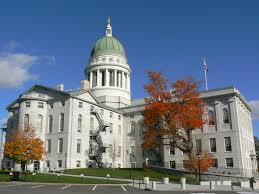 |
Augusta, Maine was first explored by members of the Popham Colony in 1607. It was inhabited by individuals from the Plymouth Colony and built as a trading post in 1625. At the time, the settlement was known as Cushnoc. In 1754, Fort Western was built in the region. It is the oldest wooden fort still standing in the United States. Augusta was designated the capital of Maine in 1827. It was incorporated as a city in 1849.
|
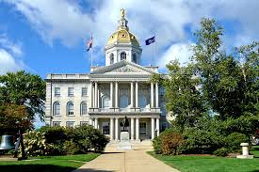 |
Concord, New Hampshire - Concord was founded sometime around 1720 by Ebenezer Eastman and a group of Massachusetts settlers. It was originally called Pemacook, then Rumford, before being changed to Concord in 1756. Concord was made capital of New Hampshire in 1808. Its capital building was built in 1819. Today, Concord is a typical New England town with lots to see. it is home to the Christa McAuliffe Planetarium. She died in the 1986 Challenger space shuttle disaster. Concord is also home to the Museum of New Hampshire History and the Franklin Pierce Law Center - the only law school in the state.
|
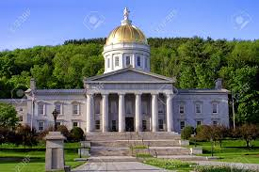 |
Montpelier, Vermont - Chartered in 1781, Montpelier was named after the French city of the same name. The city's economy was once highly dependent on timber, was is now based on granite processing. With only about 8,000 people, Montpelier is the nation's smallest capital city. It is the only capital city without a McDonald's and the only capital city with a clothes pin factory.
|
 |
Boston, Massachusetts - Boston was founded in 1630 by English Puritans. The area was originally called Trimountaine, but later renamed Boston after a town in England. In 1635, the first public school in America was founded (Boston Latin School) in Boston, followed by the first university (Harvard) in 1636.
In the 1770’s, Boston was the hotbed of revolutionary action in America. After the Boston Massacre and Boston Tea Party, the first battles of the American Revolution were fought in nearby towns, and the Battle of Bunker Hill was fought in present-day downtown. After the war, Boston remained one of the nation’s most important ports, which exported great quantities of rum, fish, salt and tobacco. In the mid 1800’s, Boston became a major center for the abolitionist movement (anti-slavery), and soon became one of the nation’s leading manufacturing centers. Today, Boston is the capital of Massachusetts and cultural and economic center of New England. It is affectionately called "Beantown," for its history of producing baked beans with imported molasses. It is a popular tourist destination for its history, architecture, and cuisine. Boston is also a major college town and is home to many prestigious schools besides Harvard such as Tufts University, Massachusetts Institute of Technology (M.I.T.), Wellesley College, Boston College, and Boston University.
|
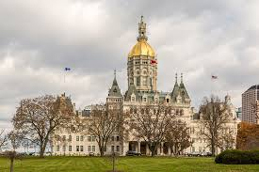 |
Hartford, Connecticut - Hartford was first settled in 1637. It was originally called Newtown, but changed to Hartford in honor of the English town of Hertford. In the 1800's, the Hartford region was the center of abolitionist (anti-slavery) activity in America. Harriet Beecher Stowe wrote her famous book Uncle Tom's Cabin in Hartford, and her famous brother, Henry Ward Beecher, was an outspoken reverend who preached against slavery.
Today, Hartford is recovering from years of population decline. It is often referred to as "The Insurance Capital of the World" because several major insurance companies are headquartered in the city. It is the capital of Connecticut. |
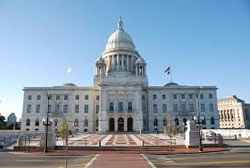 |
Providence, Rhode Island - Providence was founded in 1636 by Roger Williams. Williams, exiled from Puritan Massachusetts, had survived an entire winter in the woods of New England before securing the land from the Narragansett people. Williams founded Providence as a refuge for persecuted religious dissenters. In 1676, however, much of Providence was burned to the ground during King Phillip's War. Nevertheless, Providence was rebuilt and soon became a major fishing and shipping center. After the Revolutionary War, Providence became a major manufacturing center. Large amounts of jewelry, silverware, and machinery were produced. In 1900, it became the sole capital of Rhode Island. Prior to 1900, it had shared the title of state capital with Newport.
|
 |
Albany, New York - Albany was originally settled in 1614 as a Dutch trading post known as Fort Nassau. The name was changed to Albany in 1664 after the British took control of the region. It was named after the Duke of Albany. Albany was officially chartered in 1686, making it the second oldest chartered city in America. It was made capital of New York in 1797. The state capital building, modeled after the city hall of Paris, France, was completed in 1899.
|
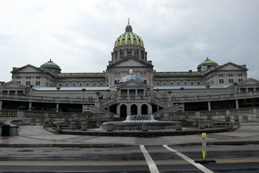 |
Harrisburg, Pennsylvania - Originally named Louisburg, Harrisburg was incorporated as a city in 1791 and made capital of Pennsylvania in 1812. The small town served as a training ground for Union troops during the American Civil War. Today, Harrisburg is home to the Pennsylvania Farm Show, a major agricultural exposition started in 1931.
|
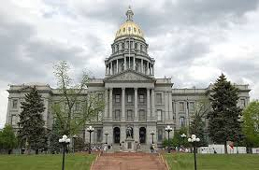 |
Trenton was originally founded as a Quaker settlement in 1679. It was named after William Trent, one of its most important landowners. Trenton was the site of George Washington's first military victory in the Revolutionary War. On December 26, 1776, Washington and his troops crossed the icy Delaware River and captured a group of 800 Hessian (German) soldiers. The victory helped boost Patriot morale and caused many soldiers to relist in the army. Trenton, formerly a major manufacturing center, is home to the famous sign above the Lower Free Bridge that reads "Trenton Makes, the World Takes."
|
 |
Dover, Delaware - Dover was formed as the court town for the newly formed Kent County in 1683 by William Penn. In 1777, the state;s capital was moved from New Castle to Dover because of its central location in Delaware and because it was out of reach of British naval bombardments. Dover was the home of Caesar Rodney, a signer of the Declaration of Independence and the president of Delaware during the Revolutionary War. He is featured on the back of the state's quarter, which was issued in 1999. In the mid-1800's, Dover was home to a large Quaker population that managed the city's stops on the Underground Railroad, a secret escape route used by runaway slaves.
|
 |
Annapolis, Maryland - The port city of Annapolis is the capital of Maryland and home of the United States Naval Academy. In 1783, Annapolis briefly served as the capital of the United States following the signing of the Treaty of Paris which ended the Revolutionary War. In December of that year, George Washington resigned his post as Commander-in-Chief of the Continental Army in Annapolis. Today, Annapolis is a vibrant town full of interesting marinas, shops, boutiques, hotels, and fine dining.
|
 |
Richmond, Virginia - Richmond, originally called Henricus, was settled by Thomas Dale, the governor of the Jamestown colony in 1611. In 1737, the name was changed to Richmond, after the British city Richmond-upon-Thames. In 1775, Patrick Henry uttered the immortal words "Give me Liberty or Give me Death" at St. John's Church in Richmond. In 1780, the capital of Virginia was moved from Williamsburg to Richmond.
During the Civil War, Richmond was named capital of the Confederacy after Virginia seceded from the Union. Numerous Union campaigns designed to attack and occupy Richmond were thwarted by Confederate armies. The city was ultimately captured by Union forces in 1865, just days before the entire Confederacy fell. Today, Richmond is the third largest in Virginia. It is the smallest city in America that has a federal reserve bank.
|
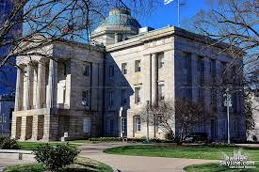 |
Raleigh, North Carolina - Raleigh is the capital and second largest city in North Carolina and the 43rd largest city in the United States. It is located in the region of the state known as the "Research Triangle," which also includes nearby Chapel Hill (University of North Carolina) and Durham (Duke University).
Raleigh was founded in 1792. It was named after Sir Walter Raleigh, the sponsor of the "Lost Colony" of Roanoke Island. Raleigh was said to be planned so that it was no more than ten miles away from a tavern that was popular with legislators known as Isaac Hunter's Tavern. In 1808, future president Andrew Johnson, sworn into office following the assassination of Abraham Lincoln, was born in Raleigh. In 1887, North Carolina State University, then, North Carolina College of Agriculture and Mechanic Arts, was founded in Raleigh. Today, Raleigh is one of the fastest growing cities in America. It is home to numerous culture sites including the North Carolina Museum of History and the North Carolina Museum of Natural Sciences. Its one professional sports team, the NHL's Carolina Hurricanes, recently won the Stanley Cup (the NHL championship).
|
 |
Columbia, South Carolina - Columbia is the capital and largest city of South Carolina. It was founded in 1786 as the new capital of South Carolina. Legislators of the state nearly voted for its name to be Washington. In 1801, South Carolina College was founded in Columbia. It would later become the University of South Carolina. In 2015, South Carolina became the last state southern state to remove the Confederate flag from flying atop its capital building.
|
 |
Atlanta, Georgia - Atlanta was founded in 1836 as a railroad terminus. In fact, its original name was "Terminus". The city was burned to the ground in 1864 as part of Sherman’s March to the Sea during the Civil War. The events of the "march" were portrayed in the film Gone with the Wind, one of the most beloved movies in American history. After the war, Atlanta was quickly rebuilt and soon became the cultural and industrial center of the South. Today, Atlanta is a bustling city with a metropolitan area that exceeds 5,000,000 people. It was the birthplace of Martin Luther King Jr. and numerous celebrities. Atlanta serves as the world headquarters for Coca-Cola, Home Depot, CNN, and UPS.
|
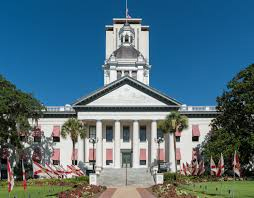 |
Tallahassee, Florida - Tallahassee was founded in 1823 as the capital of the Florida Territory. It was made capital because it was a central meeting point between the two largest cities in the territory at the time - Pensacola and St. Augustine. The name Tallahassee is roughly translated to "old fields" in the Muskogean language. Today, it is home to Florida State University and its 38,000 students!
|
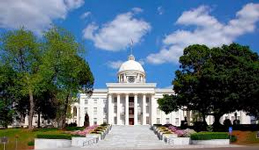 |
Montgomery, Alabama - Montgomery is the capital of Alabama. It was named after General Richard Montgomery, an American Revolutionary War General who died in combat. Montgomery was the first capital Montgomery, however, is best known for the bus boycott of 1955. On December 1, 1955, Rosa Parks refused to give up her seat on a public bus to a White person. At the time, African-Americans did not have the same rights as White people, and Parks was arrested. According to the law, Black people had to give up their seat to a White person who requested it. Her arrest mobilized the city's African-American residents to stage a boycott ( a refusal to ride the buses) led by Dr. Martin Luther King Jr. Instead of riding buses, the city's Black population rode taxis, bicycles, or carpooled. Many people even walked to work! The boycott threatened to cripple Montgomery's economy and the case was taken to Supreme Court. After hearing arguments from future Supreme Court justice Thurgood Marshall, bus segregation laws were declared unconstitutional, and made illegal forever.
|
 |
Jackson, Mississippi - Jackson, named for Andrew Jackson, hero of the Battle of New Orleans during the War of 1812, and seventh U.S. president, was founded in 1821 as the capital of Mississippi. During its early history, Jackson served as a key manufacturing center for the Confederate Army during the Civil War. Several battles took place in Jackson, which was eventually burned and looted by forces under the command of Union General William T. Sherman. Like many southern cities, Jackson was the site of civil unrest during the mid 1900's. On June 12, 1963,
|
 |
Nashville, Tennessee - Nashville was founded as Fort Nashborough in 1779. It was named after Revolutionary War hero Francis Nash. It was incorporated as a city in 1806 and named capital of Tennessee in 1843. In 1862, after Tennessee has seceded from the Union before the Civil War, Nashville became the first state capital to be captured by Union forces after nearby Forts Donelson and Henry fell to armies under the command of Ulysses S. Grant.
Today, Nashville is known as "the Music City," and is home to the Grand Ole' Opry, the Country Music Hall-of-Fame, and many country music record labels. It is also home to Vanderbilt University, which is considered one of the most prestigious institutes of higher learning in the nation. The school was named after Cornelius Vanderbilt, who donated a million dollars to start the university. Vanderbilt gave the money despite having never visited Tennessee. It is said that he hoped his donation would help sectional wounds between the North and South that lingered after the Civil War. Nashville is the second largest city in Tennessee and fourth largest city in the southeastern United States.
|
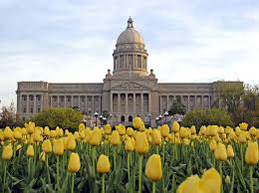 |
Frankfort, Kentucky - Frankfort was founded in 1786 by the infamous James Wilkinson, who purchased 260 acres of land on the north side of the Kentucky River. Wilkinson was the leader of the "Spanish Conspiracy," a failed plot to join Kentucky with the Spanish Empire to gain control of the Mississippi River and the port of New Orleans. Frankfort was named for Stephen Frank, a local citizen who was killed by natives near a river crossing the area. After Wilkinson sold the land in 1792, Frankfort was named capital of the commonwealth of Kentucky.
|
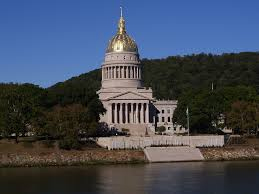 |
Charleston, West Virginia - Charleston was established in 1794. It was presumably named after the father of Col. Charles Clendenin. Clendenin owned the land on which Charleston was built. Charleston began as a salt mining center after salt deposits were found on the Kanawha River. Natural gas and coal were found soon after. In 1885, 22 years after West Virginia had voted to secede from Virginia during the Civil War, Charleston was named state capital. Today, it is the largest city in West Virginia.
|
 |
Columbus, Ohio - Columbus was originally named Franklinton and founded as a settlement in 1797. It was named by an early settler named Lucas Sullivant, who was a great admirer of Benjamin Franklin. In 1812, it was declared the capital city of Ohio, and its name was changed to Columbus, after the famous explorer. The population of Columbus boomed in 1831, when it was linked to the Ohio and Erie Canal, and when the National Road (from Baltimore) was built through it. By 1875, Columbus was served by eight different railroads.
Today, Columbus is the largest city in Ohio. It is home to Ohio State University, the nation's largest university in terms of student enrollment. Over 57,000 students attend Ohio State.
|
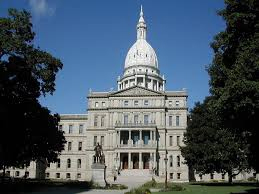 |
Lansing, Michigan - The city of Lansing was founded in 1836 after a group of New York land speculators unkonwingly bought plots of land in the region that turned out to be swamps. Lansing, Michigan, was named after the hometown of the city's founder - Lansing, New York. Although Detroit was the original capital of Michigan, it was moved to Lansing in 1847 because of its central location. In 1855, Michigan State University (then the Agricultural College of the state of Michigan) was built in Lansing. In 1897, Ransom E. Olds founded the Olds Mobile Vehicle Company in Lansing (Oldsmobile). The company would soon be purchased by General Motors.
|
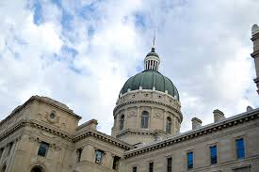 |
Indianapolis, Indiana - Indianapolis is the largest city and capital of Indiana. With a population approaching 900,000 people, it is the nation's 13th largest city. Originally a swampy area known as Fall Creek, Indianapolis was founded as the state capital in 1821. The name Indianapolis is a combination of Indiana, and polis, the Greek word for "city". After the Madison & Indianapolis Railroad built tracks through the city in 1847, its population soared. By 1900, the population had increased by over 150,000 in fifty years. Soon, Indianapolis became a major center for automobile production. In 1909, the Indiana Motor Speedway was built. Its surface was paved with 3.2 million bricks. In 1911, the first Indianapolis 500 (500 mile car race) was held in the speedway. Today, the race attracts more visitors and viewers than any other sporting event in the world. Indianapolis is home to the Indiana Pacers NBA basketball team as well as the Indianapolis Colts NFL football team.
|
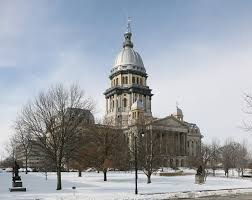 |
Springfield, Illinois - Springfield was founded in 1819 and became capital of Illinois in 1837. Many of Springfield's historical attractions involve Abraham Lincoln. Besides Lincoln's home, the city features the Lincoln-Herndon Law Offices State Historic Site - the building in which Lincoln and his partner, William H. Herndon, practiced law. It also features the Abraham Lincoln Presidential Library and Museum. The museum holds the "Everett" copy of the Gettysburg Address, one of only five known original copies of the timeless speech. Springfield is also the site of Lincoln's tomb. He is buried in a mausoleum in Oak Ridge Cemetary.
|
 |
Madison, Wisconsin - Madison is the capital of Wisconsin. It is also its second largest city. It was founded in 1836 by James Luane Doty, who bought 1,000 acres of swamps and forests in what would become Madison. Madison was made capital of Wisconsin in 1837. It was chosen because of its central location between Milwaukee and Prairie du Chien. In 1841, the University of Wisconsin was founded in Madison. Today, over 41,000 students take classes there. Madison is known as a thriving college town with a vibrant music and performing arts scene. It is often ranked among the top cities to live in.
|
 |
St. Paul, Minnesota - St. Paul is the capital of and second largest city in Minnesota. St. Paul and neighboring Minneapolis form the "Twin Cities" of Minnesota, separated only by the Mississippi River. Founded in the early 1800's, the area that is now St. Paul was a flourishing fur and whiskey trading center and was known as Pig's Eye Landing. In 1841, the settlement's name was changed to St. Paul after Father Gaultier (a French missionary) established the St. Paul Church. St. Paul was named capital of Minnesota in 1849, when it was still a territory. Cartoonist Charles Schultz, creator of Peanuts cartoons (Snoopy and Charlie Brown), was born in St. Paul.
|
 |
Des Moines, Iowa - Des Moines is the capital and largest city of Iowa. Its name is pronounced "Da Moin." It was founded in 1843 by Captain James Allen as Fort Des Moines. It was incorporated as a city in 1851 and made capital in 1857. Today, Des Moines features an extensive skyway - a system of enclosed bridges that connect buildings. There are over three miles of such connections in Des Moines. It is also a major insurance center and is the cultural and industrial center of Iowa.
|
 |
Jefferson City, Missouri - Jefferson City, located along the banks of the Missouri River, is the capital of Missouri. It was named after Thomas Jefferson an became capital of Missouri in 1821. When it was chosen as capital, its name was Lohman's Landing. Jefferson City's beautiful domed capital building was completed in 1917. Today, the building houses the Missouri State Museum.
|
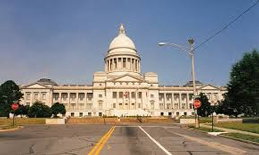 |
Little Rock, Arkansas - Little Rock was established in Little Rock is best known for the integration incident at
|
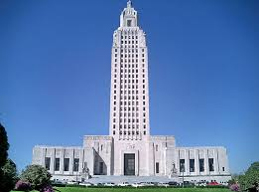 |
Baton Rouge, Louisiana - Baton Rouge is the capital of Louisiana. The name "Baton Rouge" is French for "red stick." Baton Rouge was made capital in 1846. Because most of the state's legislators were Protestant, they wanted to move the seat of government away from New Orleans, which was largely Catholic. Today, Baton Rouge is home to LSU (Louisiana State University). It's capital building is the tallest state capital building in the United States.
|
 |
Pierre, South Dakota - Pierre, pronounced "peer," was declared capital of South Dakota in 1889. It is the second smallest capital city in the nation. It is home to several interesting sights and musuems such as the South Dakota Cultural Heritage Center, which preserves the historical and cultural legacy of the state's early Sioux inhabitants and the first wave of european settlers. Pierre is also home to the Lewis and Clark Family Center, which features interactive exhibitson the discoveries made by the explorers during their 1804-1806 journey across the western wilderness.
|
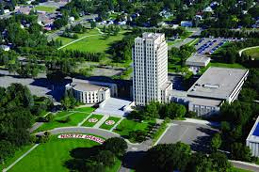 |
Bismarck, North Dakota - Bismarck is the capital and second largest city of North Dakota. It has a population of 55,532. The city was founded as Camp Hancock in 1872 at a river fording spot commonly used by Native Americans. It was originally built to protect railroad workers from Indian attacks. After the tracks had successfully been built through the city, it was renamed Bismarck in honor of German chancellor Otto von Bismarck. When gold was discovered in the nearby Black Hills, Bismarck became an important transportation center for miners. Today, Bismarck is a trade center for grain and livestock and an industrial center for farm machinery and processed food.
|
 |
Lincoln, Nebraska - Lincoln, Nebraska was founded as Lancaster in 1856. The name was changed to Lincoln by lawmakers in Omaha in an attempt to keep the capital in that city. The name "Lincoln" was chosen, after the recently assassinated Abraham Lincoln, to anger residents who were sympathetic to the slavery cause. Nevertheless, the ploy did not work. Lincoln was named capital on March 1, 1867, when Nebraska was officially admitted to the Union. Today, Lincoln is home to the University of Nebraska. It is nicknamed "The Star City".
|
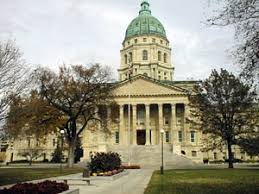 |
Topeka, Kansas - Located on the banks of the Kansas River, Topeka is the state capital. The name "Topeka" is translated as "a good place to dig potatoes" in tribal language. Topeka was founded in 1854 as a stop along a trail from Fort Leavenworth to Fort Riley in which people could cross the Kansas River. Soon, Topeka became a shipping hub for steamboats. In 1861, Topeka was named capital of Kansas, after it became the 34th state. The city of Topeka, Kansas was the defendant in one of the most important Supreme Court cases in the nation's history (Brown vs the Board of E ducation of Topeka, Kansas). In 1951, a law-suit was filed against the schoolboard of Topeka, Kansas, by 13 families on behalf of their children. The suit called for the integration of the city's high schools that were segregated by race (African-Americans were forced to attend different schools than Whites). Federal law permitted racial segregation as long as the schools were "equal" in what they provided students. Segregated schools, however, were never equal. In 1954, the U.S. Supreme Court ruled that segregation of public schools was unconstitutional, and by 1955 demanded integration of all American schools "with all deliberate speed".
|
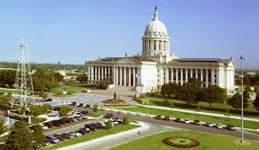 |
Oklahoma City, Oklahoma - Oklahoma City was founded during the 1889 Land Run. That year, president Benjamin Harrison opened up two million acres in Oklahoma for settlement. Settlers were offered 160 acres of land if they promised to use and improve it. Some 50,000 people, known as "Sooners" rushed to Oklahoma Territory. In a single day, Oklahoma City received 10,000 people. In 1907, it was made capital of Oklahoma. In 1995, the Murrah Federal Building in Oklahoma City was bombed. 168 people were killed making it the nation's mmost deadly act of domestic terrorism in American history at the time.
|
 |
Austin, Texas - Originally named Waterloo, the city was renamed in 1839 after Texas founder Stephen F. Austin. It was immediately declared the capital of the Republic of Texas. Unlike other cities in Texas, voters in Austin voted against secession at the beginning of the Civil War. In 1883, the University of Texas was established in Austin. The university is the 5th largest in America. Today, Austin is the 11th largest city in America, the second largest capital city in America, and the fourth largest city in Texas. It is a world center of computer and technology development. It serves as the world headquarters of Dell Computers as well as Whole Foods markets. Austin is also a hub for music, film, multimedia, education and the eclectic individuals involved. Residents of Austin call themselves "Austinites." One of the city's slogans is "Keep Austin Weird". Austin is also famous for its population of Mexican free-tailed bats. Every year, over one million bats take residence under the Anne W. Richards Congress Avenue Bridge to roost and raise their young. Every summer evening, the bats emerge from the bridge to search for insects in hordes of tens of thousands. The spectacle draws thousands of visitors.
|
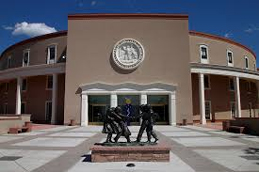 |
Santa Fe is the capital of New Mexico. It was founded in 1598 as the capital of the province of Nuevo Mexico, an area claimed for Spain by Spanish explorer Francisco Vàsquez de Coronado. It is the second oldest settlement in America. Santa Fe was the western terminus of the Santa Fe Trail, which was used from 1821-1880. The city was the site of a large international trading market, where American merchants took manufactured goods and traded them for furs and other valuable items. Santa Fe was captured by the U.S. Army in 1846 in the Mexican War. American soldiers used the Santa Fe Trail to invade New Mexico. In 1912, Santa Fe was officially made capital of New Mexico upon its statehood.
|
 |
Denver, Colorado - Located at the junction of the Great Plains and the Rocky Mountains, Denver is the largest city in Colorado and the 21st largest city in America. Originally called Montana City, and then Denver City, Denver was named after Governor of the Kansas Territory, James W. Denver. Denver was founded in 1858 as a mining boomtown during the Pike's Peak Gold Rush. It was incorporated in 1861 and became capital of the Colorado Territory in 1865. In 1870, when the Denver Pacific Railroad linked with the new Transcontinental Railroad, Denver became a supply and service center for people moving west. Interestingly, in 1970, Denver became the only city to decline their invitation to host a winter Olympics (they were selected to host the 1976 winter Olympics). Today, Denver is a vibrant and growing city. It is home to large corporations including Frontier Airlines, Quizno's and Coors. Denver also has a thriving professional sports scene and boasts professional teams in all four major sports (football, baseball, basketball, hockey). In 2016, the Denver Broncos defeated the Carolina Panthers to win third Super Bowl title. Denver is often called "the Mile High City," because it lies at an elevation of exactly 5,280 feet above sea level.
|
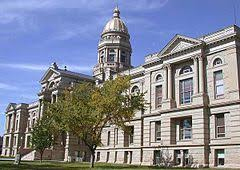 |
Cheyenne, Wyoming - Cheyenne, located in the Great Plains of southeastern Wyoming, was founded in 1867 by General Grenville Dodge. He named the new settlement after the Cheyenne Indians. In 1868, the Wyoming Territory was established and Cheyenne was made its capital.
|
 |
Helena, Montana - Helena was established in 1864 when gold was discovered in nearby Last Chance Creek. Helena was made capital of the Montana Territory in 1875. It was originally called Crabtown after John Crab, one of the city's founders. It was eventually changed to Helena after another founder's hometown - St. Helena, Minnesota. By 1888, Helena was full of millionnaires. Over 3.5 million dollars worth of gold was taken from its mines - mostly from Last Chance Gulch.
|
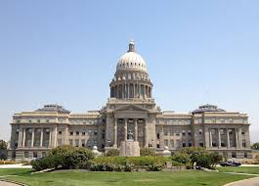 |
Boise, Idaho - Boise is the capital and largest city of Idaho. It was incorporated in 1854 during the western gold rushes and was immediately made capital of the Idaho Territory (though the capital building was completed in 1920). In 1863, Fort Boise was established first as a supply depot along the Oregon Trail, and then, a military post established by the United States government to keep gold seekers safe from Indian raids. Boise continued to grow into the 1900s as irrigation for farming in the region expanded. In 1932, the Arrowrock Dam was built over the Snake River near Boise - the largest dam ever built at the time. In the 1930s, Boise received an influx of Basque people from the western Pyrenees regions of Spain and France. Today, Boise has the largest concentration of Basque people in the nation. Recently, the city of Boise started a new tradition called the Idaho Potato Drop, where a giant potato is dropped from the top of the Idaho State Capital building upon the new year (similar to the apple that drops in New York). Idaho is the nation's top producer of potatoes.
|
 |
Salt Lake City was founded by Brigham Young and members of the Church of Latter Day Saints (Mormons) in 1847. The Mormons were looking for an isolated place to practice their religious beliefs without being persecuted. Immediately, settlers began building their temple, which was completed forty years later. They also organized a new state, which they called Deseret. Congress, however, denied their petition for statehood and instead created the Utah Territory. In 1858, Salt Lake City was named capital of the Utah Territory. In the late 1800's, the city's population grew with the completion of the Transcontinental Railroad. The famed "Golden Spike" was hammered north of Salt Lake City in Promontory, Utah. Today, Salt Lake city remains one of only two urban areas in the Great Basin (Reno, Nevada is the other). A little less than half of the city's residents are Mormons. The city is a popular resort town with skiers and winter sports enthusiasts. In 2002, Salt Lake City hosted the Winter Olympics.
|
 |
Phoenix, Arizona - Phoenix, Arizona is the largest capital city in the United States. With a population approaching 1.5 million people, Phoenix is America's sixth largest city. Phoenix continues to rank as of one of America's fastest growing cities. It is home to professional sports teams in all four major sports: The Cardinals (NFL), Diamondbacks (MLB), Suns (NBA), and Coyotes (NHL). Located in the northern reaches of the Sonoran Desert, in a region of Arizona known as the Valley of the Sun, Phoenix is one of the sunniest cities in America. It receives over 300 days per year of sunshine. The city was founded in 1868 by an ex-Confederate soldier from Wickenburg, Arizona named Jack Swilling. He envisioned the area as a great place to farm. In 1881, Phoenix was incorporated as a city. The city's population swelled after the railroads came to town and after the construction of the Theodore Roosevelt Dam over the Salt River. The dam provided electricity and allowed for expanded irrigation in the valley for farming, and produced a water supply for the growing population. On February 14, 1912, Phoenix was dedicated by President William Howard Taft as capital of the new state of Arizona. After Arizona statehood, Phoenix grew rapidly. By 1920, the first skyscraper was built in the city and by 1929, the city's first airport was constructed.
|
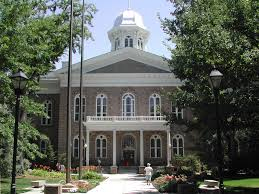 |
Carson City, Nevada - Like Many of Nevada's towns, Carson City was founded during the gold and silver mining boom of the 1850's and 1860's. The city was named after American frontiersman Kit Carson. Miners and Prospectors flooded to the hills around Carson City after the discovery of the Comstock Lode, the largest concentration of silver in the world, in nearby Virginia City. Carson City was named capital of the Nevada territory in 1861.
|
 |
Salem, Oregon - Located within the Willamette Valley, Salem is the capital and third largest city of Oregon. Salem is known as the "Cherry City" because of the historical importance of the cherry industry in the region. Salem was founded in 1840 by missionary Jason Lee. Lee promptly established the Oregon Institute, which later became Willamette University, the oldest university in Oregon. Although Oregon City was the original capital of Oregon, it was moved to Salem in 1851.
|
 |
Olympia, Washington - Located on the southern tip of the Puget Sound, the area that is now Olympia was once an important gathering grounds for many local native tribes because of the region's abundance of shellfish and salmon. The town of Olympia, originally called Smithfield, was first established in 1848. It was renamed Olympia after the nearby Olympic Mountains. After Congress authorized the creation of the Washington Territory in 1853, Olympia was named capital. Today, Olympia holds Washington's largest Earth Day celebration, known as the Progression of Species - large parade that celebrates endangered species and other wildlife.
|
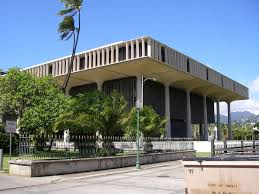 |
Honolulu. Hawaii - Honolulu is the largest city and capital of Hawaii. It's name means "Sheltered bay" in Hawaiian language. After Hawaii achieved statehood in 1959, Honolulu experienced rapid economic growth. It is located on the island of Oahu. Honolulu is particularly famous for its beautiful beaches. Waikiki Beach attracts millions of visitors every year and features numerous hotels, restaurants, shops, and clubs. Just to the west of Honolulu is the USS Arizona Memorial. The USS Arizona was a ship that was sunk by Japanese forces when they attacked Hawaii's Pearl Harbor during World War II (December 7, 1941). 1,177 U. S. sailors died in the attack.
|
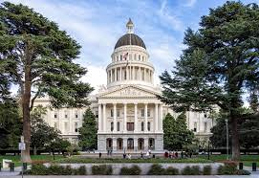 |
Sacramento, California - Sacramento was founded in 1848 as Sutter’s Fort. It was incorporated as a city in 1850. It was one of California’s first incorporated cities. Perhaps no other city was as important to the gold and land rushes of the 1850’s as Sacramento. The city’s population swelled after gold was found 50 miles to the north. In 1855, it was declared capital of California. Sacramento soon became a very important city, and was made the western terminus of both the Pony Express (an overland mail route from St. Charles, Missouri to Sacramento) and first Transcontinental Railroad (a cross-country railroad).
|
 |
Juneau, Alaska - Juneau was founded in 1880 as a gold mining center. It was the first twon to be settled after the United States purchased Alaska from Russia in 1867. It was named after French-Canadian prospector Joe Juneau. Although Sitka was the original capital of Alaska, it was moved to nearby Juneau in 1906. Since 1906, several initiatives have been introduced to move the capital away from Juneau, but all have failed. Today, Juneau is a popular cruise stop for tourists heading to Glacier Bay. Nearly a million people visit Juneau every year.
|